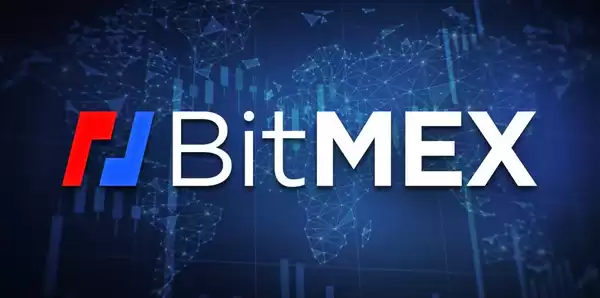-
 bitcoin
bitcoin $120167.907534 USD
1.27% -
 ethereum
ethereum $4468.611945 USD
2.53% -
 xrp
xrp $3.013607 USD
1.80% -
 tether
tether $1.000549 USD
-0.01% -
 bnb
bnb $1092.592149 USD
6.28% -
 solana
solana $231.391244 USD
4.59% -
 usd-coin
usd-coin $0.999699 USD
-0.04% -
 dogecoin
dogecoin $0.259020 USD
4.30% -
 tron
tron $0.342747 USD
0.34% -
 cardano
cardano $0.860977 USD
1.07% -
 hyperliquid
hyperliquid $50.155412 USD
5.34% -
 chainlink
chainlink $22.637678 USD
0.46% -
 ethena-usde
ethena-usde $1.000528 USD
-0.07% -
 avalanche
avalanche $30.613779 USD
-0.07% -
 stellar
stellar $0.403905 USD
0.94%
BitMEX contract skills
BitMEX, a reputable cryptocurrency exchange known for its advanced contract trading platform, offers traders perpetual futures contracts with various features, enabling indefinite position holding and high leverage.
Nov 21, 2024 at 01:39 am

BitMEX Contract Trading: A Comprehensive Guide to Mastering Perpetual Contracts
BitMEX, a leading cryptocurrency exchange, has garnered renowned acclaim in the blockchain industry for its innovative contract trading platform. This guide will delve into the intricacies of BitMEX's contract trading, providing a thorough understanding of its mechanisms and equipping traders with the skills to navigate this dynamic trading arena effectively.
What are BitMEX Contracts?
BitMEX contracts are perpetual futures contracts, a type of derivative that tracks the price of an underlying asset. Unlike traditional futures contracts, perpetual contracts do not have an expiry date, allowing traders to maintain open positions indefinitely. The underlying asset for BitMEX contracts is the Bitcoin reference rate, which represents an aggregated average price of Bitcoin across several major cryptocurrency exchanges.
Types of BitMEX Contracts
BitMEX offers various types of contracts, each with unique specifications:
- XBTUSD: This contract tracks the price of Bitcoin in US Dollars.
- XBTJPY: Tracks the price of Bitcoin in Japanese Yen.
- XBTUSDT: Uses Tether (USDT) as the settlement currency instead of USD.
- ETHUSD: Reflects the price of Ethereum in US Dollars.
Advantages of Trading BitMEX Contracts
- Perpetual nature: Enables traders to hold positions indefinitely, eliminating the need to roll over contracts.
- High leverage: BitMEX offers generous leverage options, allowing traders to amplify their returns.
- Low fees: The platform boasts competitive trading fees, reducing the impact on profitability.
- Market volatility: The cryptocurrency market often exhibits significant price fluctuations, providing ample opportunities for traders.
Steps to Trade BitMEX Contracts
- Create an Account: Establish a BitMEX account and complete the verification process.
- Fund Your Account: Deposit funds into your BitMEX account through various supported methods.
- Choose a Contract: Select the contract you wish to trade based on the underlying asset and trading preferences.
- Specify Parameters: Determine the position size, leverage level, and stop-loss orders.
- Place an Order: Execute the order by selecting "Buy Long" or "Sell Short" based on market expectations.
- Monitor Position: Track the position's performance and make adjustments as needed.
- Close Position: Exit the position by placing an opposing order or allowing it to run indefinitely.
Risk Management Strategies
Effective risk management is crucial in BitMEX contract trading. Here are key strategies:
- Position Sizing: Limit the size of positions relative to account balance to avoid excessive losses.
- Leverage Control: Utilize leverage judiciously, recognizing the potential for amplified profits and losses.
- Stop-Loss Orders: Place stop-loss orders to protect against severe price movements.
- Trailing Stop-Loss: Adjust stop-loss orders dynamically to follow market trends.
- Hedging: Utilize opposing positions in different contracts or assets to reduce overall risk.
- Position Monitoring: Continuously monitor open positions and adjust strategies as market conditions change.
Contract Trading Platform
BitMEX's contract trading platform provides a comprehensive suite of features:
- Depth Chart: Displays the market depth for each contract, providing insight into order levels.
- Charting Tools: Offers advanced charting capabilities with technical indicators.
- Trade History: Allows traders to review past trades and analyze performance.
- Order Management: Enables modification and cancellation of open orders.
- API Trading: Facilitates automated trading using the BitMEX API.
Disclaimer:info@kdj.com
The information provided is not trading advice. kdj.com does not assume any responsibility for any investments made based on the information provided in this article. Cryptocurrencies are highly volatile and it is highly recommended that you invest with caution after thorough research!
If you believe that the content used on this website infringes your copyright, please contact us immediately (info@kdj.com) and we will delete it promptly.
- BlockDAG, DOGE, HYPE Sponsorship: Crypto Trends Shaping 2025
- 2025-10-01 00:25:13
- Deutsche Börse and Circle: A StableCoin Adoption Powerhouse in Europe
- 2025-10-01 00:25:13
- BlockDAG's Presale Buzz: Is It the Crypto to Watch in October 2025?
- 2025-10-01 00:30:13
- Bitcoin, Crypto, and IQ: When Genius Meets Digital Gold?
- 2025-10-01 00:30:13
- Stablecoins, American Innovation, and Wallet Tokens: The Next Frontier
- 2025-10-01 00:35:12
- NBU, Coins, and Crypto in Ukraine: A New Yorker's Take
- 2025-10-01 00:45:14
Related knowledge

Practical parameter settings for a Bitcoin multi-timeframe moving average system
Sep 18,2025 at 10:54pm
Optimizing Timeframe Combinations for Bitcoin Trading1. Selecting appropriate timeframes is crucial when building a multi-timeframe moving average sys...

How can I filter out false breakouts in Dogecoin high-frequency trading?
Sep 22,2025 at 01:00am
Understanding False Breakouts in Dogecoin Trading1. A false breakout occurs when Dogecoin's price appears to move beyond a defined support or resistan...

Techniques for identifying tops and bottoms in the Bitcoin on-chain NVT model
Sep 20,2025 at 07:54pm
Understanding the NVT Model in Bitcoin Analysis1. The Network Value to Transactions (NVT) ratio is often described as the 'P/E ratio' of the cryptocur...

What does the surge in open interest in Bitcoincoin futures mean?
Sep 20,2025 at 11:18pm
Understanding the Surge in Dogecoin Futures Open Interest1. A surge in open interest within Dogecoin futures indicates a growing number of active cont...

How can I use the Ethereum USDT premium to gauge market sentiment?
Sep 18,2025 at 11:55pm
Understanding the Ethereum USDT Premium1. The Ethereum USDT premium refers to the price difference between USDT (Tether) traded on Ethereum-based plat...

What should I do if Ethereum staking yields decline?
Sep 20,2025 at 06:18am
Understanding the Causes Behind Declining Ethereum Staking Yields1. The Ethereum network transitioned to a proof-of-stake consensus mechanism with the...

Practical parameter settings for a Bitcoin multi-timeframe moving average system
Sep 18,2025 at 10:54pm
Optimizing Timeframe Combinations for Bitcoin Trading1. Selecting appropriate timeframes is crucial when building a multi-timeframe moving average sys...

How can I filter out false breakouts in Dogecoin high-frequency trading?
Sep 22,2025 at 01:00am
Understanding False Breakouts in Dogecoin Trading1. A false breakout occurs when Dogecoin's price appears to move beyond a defined support or resistan...

Techniques for identifying tops and bottoms in the Bitcoin on-chain NVT model
Sep 20,2025 at 07:54pm
Understanding the NVT Model in Bitcoin Analysis1. The Network Value to Transactions (NVT) ratio is often described as the 'P/E ratio' of the cryptocur...

What does the surge in open interest in Bitcoincoin futures mean?
Sep 20,2025 at 11:18pm
Understanding the Surge in Dogecoin Futures Open Interest1. A surge in open interest within Dogecoin futures indicates a growing number of active cont...

How can I use the Ethereum USDT premium to gauge market sentiment?
Sep 18,2025 at 11:55pm
Understanding the Ethereum USDT Premium1. The Ethereum USDT premium refers to the price difference between USDT (Tether) traded on Ethereum-based plat...

What should I do if Ethereum staking yields decline?
Sep 20,2025 at 06:18am
Understanding the Causes Behind Declining Ethereum Staking Yields1. The Ethereum network transitioned to a proof-of-stake consensus mechanism with the...
See all articles










































































